Audi History: Quattro, GmbH. and the “S” and “RS” Cars
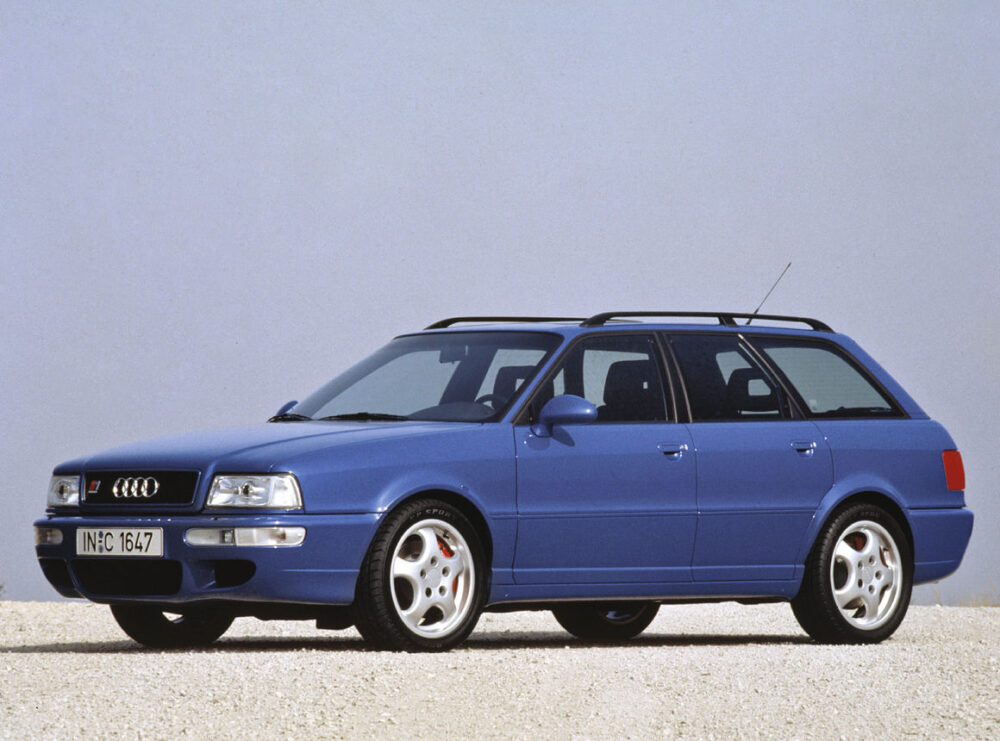 After the Quattro sparked Audi’s desire to go fast, Audi created a division that proved a worthy challenger to anything their rivals mustered.
After the Quattro sparked Audi’s desire to go fast, Audi created a division that proved a worthy challenger to anything their rivals mustered.
In 1980, Audi launched a vehicle that was so utterly animalistic that it redefined rally for the next 40 years. The B2 Quattro was a car that relaunched Audi as a serious motorsport contender, the first time they carried such prestige since 1939. But anyone who knows anything about 1980s rally will tell you: it was the space-race of motorsports. Group B was introduced in 1982, with regulations that directly led to the development of some of the most sophisticated and brutally savage racing cars in history. And with the Quattro in their roster, Audi were sitting on a gold mine. After its rousing success both on and off the track, Audi knew they were onto something. They were getting quite good at winning, and their customers wanted more. So to capitalize on their success, Audi created their first high-performance division, named Quattro, GmbH.
Quattro Races to Group B
Audi’s Quattro was immediately successful both on and off the circuit. However, the base-trim car wasn’t actually eligible for the newest rally division: Group B. Group B’s regulations compelled manufacturers to produce homologated road car analogues. Basically, all homologation vehicles had to meet specific guidelines for their racing variants to be eligible. In the case of the Quattro (and just about every other entry), that meant an entire overhaul of the car from top to bottom. To facilitate development of this new model, Audi split its assets and created an entirely separate division. This division, created in 1983, was Quattro, GmbH.
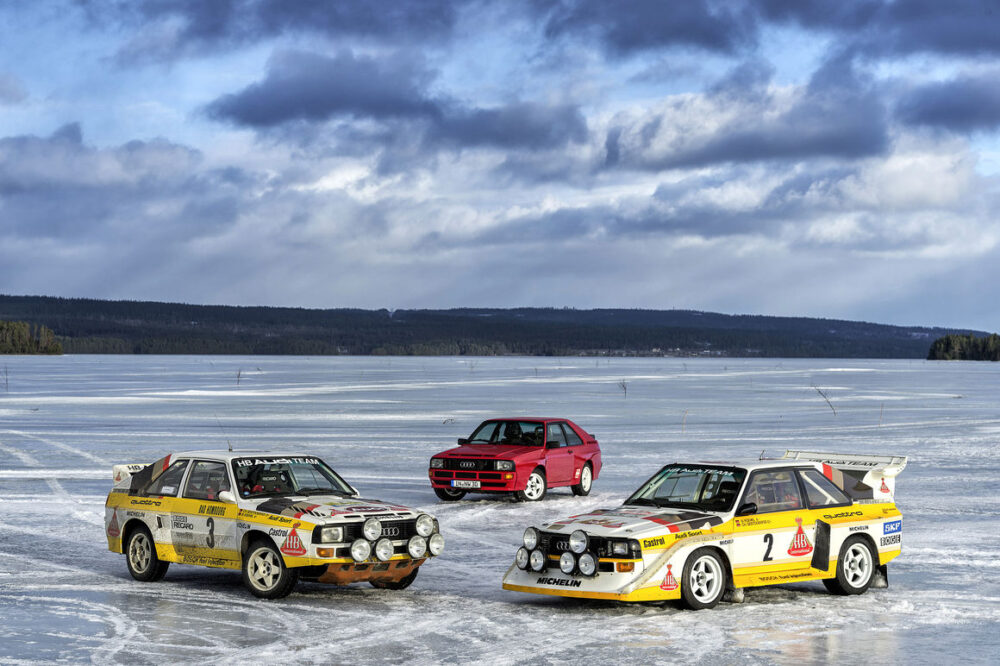
The first (failed) proposal for the follow-up class to Group B was called Group S. This class limited all vehicles to 300 hp and 10 homologation vehicles rather than 200 in Group B.
Quattro, GmbH.’s first task was the homologation of the Quattro for Group B. To comply with these regulations, the car received brand-new rally-inspired bodywork and a new engine. This all-aluminum unit, a proper 20V Triple-K turbocharged detuned racing motor, produced a little over 300 horsepower in standard trim. Audi only produced 214 units between 1984-1985, slightly over the 200-unit cutoff for homologation. This high-performance Quattro, dubbed the Audi Sport Quattro, was Quattro, GmbH.’s first proper production car, and received the internal designation “S1” in race-trim.
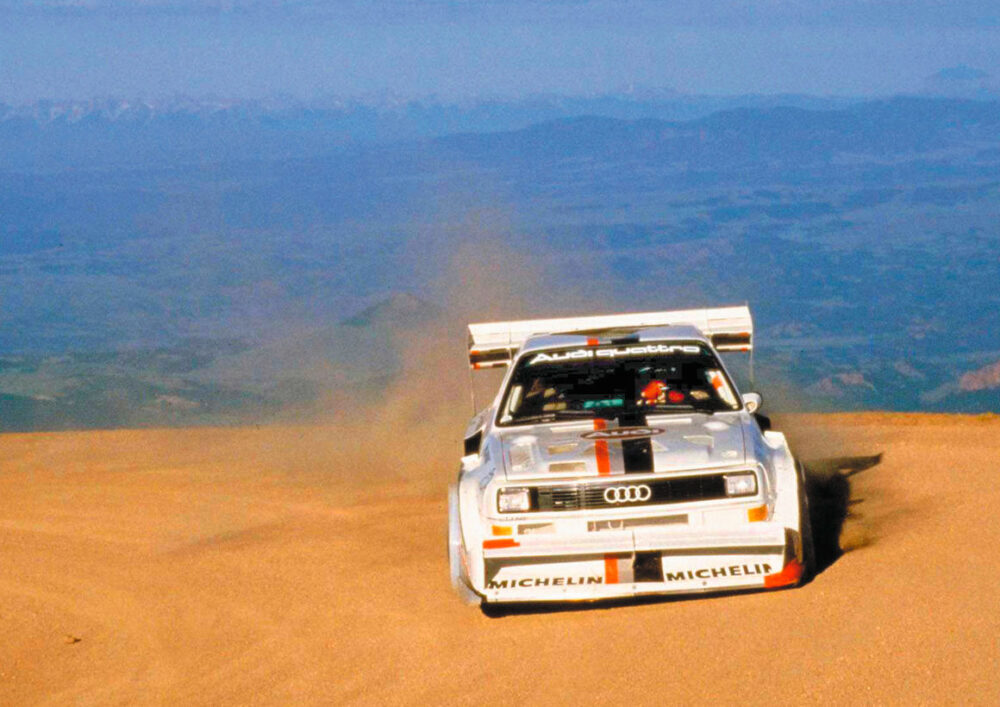
Michèle Mouton raced her S1 Quattro to an Unlimited-Class Pikes Peak record of 11:25.39 in 1985.
The Fall of Group B
Group B was the embodiment of a “Live fast, die young” mentality. But while the series was officially discontinued in 1986, the technologies developed in that timeframe endured and expanded to other motorsport and roadgoing ventures. Such improvements directly contributed to more powerful and fuel-efficient turbocharged engines, practical 4WD systems in small road cars, and advanced materials such as fiberglass and carbon fiber gaining traction. Meanwhile, the Audi Sport Quattro similarly evolved, going from essentially a beefed-up Group 4 car to the monstrous S1 E2 variant in 1985. The bespoke technologies inherent to the Quattro during this era were a valuable learning tool for Quattro, GmbH, which used the division as an opportunity to experiment with radical new directions for Audi as a performance auto maker.
Their first official foray into this expansion debuted in 1988 with the Audi 200, a full-blown Trans-Am silhouette car. Crucially, the vehicle included the same quattro 4WD system, which propelled Audi to a championship win. Their dominance was so convincing, in fact, that the SCCA banned 4WD systems for the ‘89 series. So Audi, undeterred, just went over to IMSA instead, where their quattro 4WD system was still perfectly legal. With a power increase from 510 to over 700 horsepower, the new Audi 90 was an utter monster of a car, winning 7 of the 13 races in that series as well. But at this point, Audi had a much larger presence in Germany than the US, and the powers-that-be wanted to showcase their newfound speed in something more local. So for the following season, Audi contracted Quattro, GmbH. to design a brand-new DTM car.
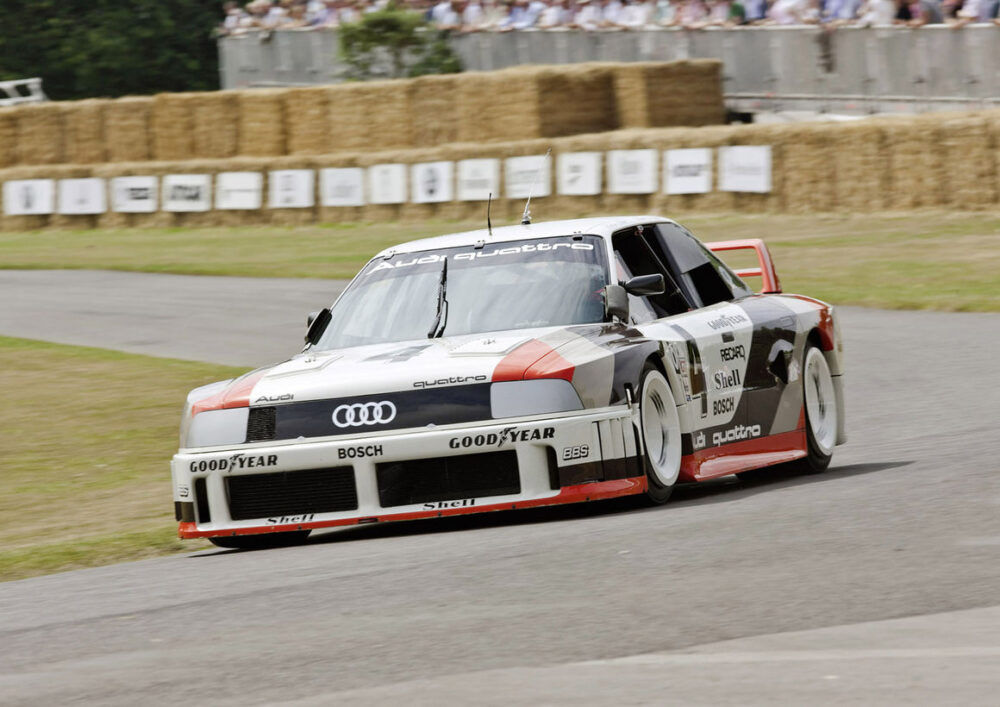
The 1989 Audi 90 IMSA GTO holds the record for the most powerful 5-cylinder works engine in motorsport, producing 720 hp in race-trim.
Quattro Comes Home
The vehicle selected by Audi to represent the company in the 1990 DTM was the Audi V8. This vehicle, based on the 4C-platform, was first produced in 1988 as Audi’s flagship model. It had all the bells and whistles, including a 3.6L 32V DOHC V8 (obviously) powerplant and, of course, quattro 4WD as standard. By this point, the consumer market loved quattro as well, having equipped vehicles since 1983 in Audi’s 80 line. So in addition to being a trademark, it was quickly evolving into a byword for fast Audis in general. And with the exposure afforded by DTM, Audi was officially back in the performance car market in Europe. The Audi V8 competed – and won – against the likes of the BMW M3, Mercedes 190 E, Opel Omega, and Toyota Supra, taking home the championship with Hans-Joachim Stuck behind the wheel.
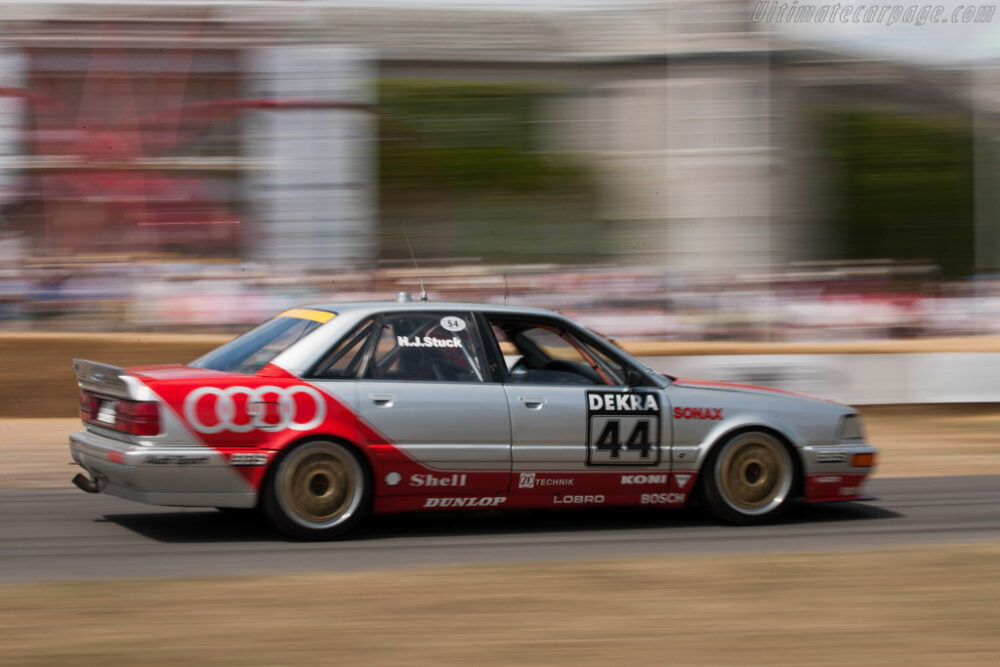
Image © Wouter Melissen. Audi was so dominant here as well that rival teams lobbied against 4WD. Audi was hit with a 1300kg weight limit the following season. They subsequently made the engine even more powerful and won anyway.
But there was one thing that companies like BMW had that Audi didn’t. They had proper performance road cars. A car like the BMW M3 is more than the sum of its parts because of the “M” badge on the back. There’s something to be said about an image of a car, whether or not it’s pragmatically faster. And Audi didn’t have anything of that sort, favoring dignified luxury cars by the early 1990s. They were absolutely fast, and were the only game in town with 4WD. But the earlier Quattro exploited a market that was now hungry for more, and Quattro, GmbH. saw this as an opportunity. So, upon completion of the DTM season, Quattro, GmbH. pitched the idea of a mid-size performance variant of the Audi 80, in the same vein as the M3 or 190 E.
The First “S” Car
The car was simply called the S2, continuing Audi’s traditional simplistic names. The reason behind the name was that the car was a spiritual successor to the Audi Sport Quattro S1. This Audi “Sport 2” was based on the B4-platform of Audi 80, making its debut in 1991 as the company’s first proper performance package. It used the same powerplant as the Quattro, producing 217 horsepower in stock trim, same as the standard Quattro (up to 230 by 1992).
But unlike the Quattro, this was a true wolf in sheep’s clothing. The car had similar performance figures to the Quattro with a top speed exceeding 150 mph and 0-60 in about 6 seconds, ultimately comparable to the other European performance offerings at the time. It retained Audi’s premium styling, just with a slightly more planted appearance. Still, it was relatively easy to mistake it for a standard Audi 80, especially if you got the estate version.
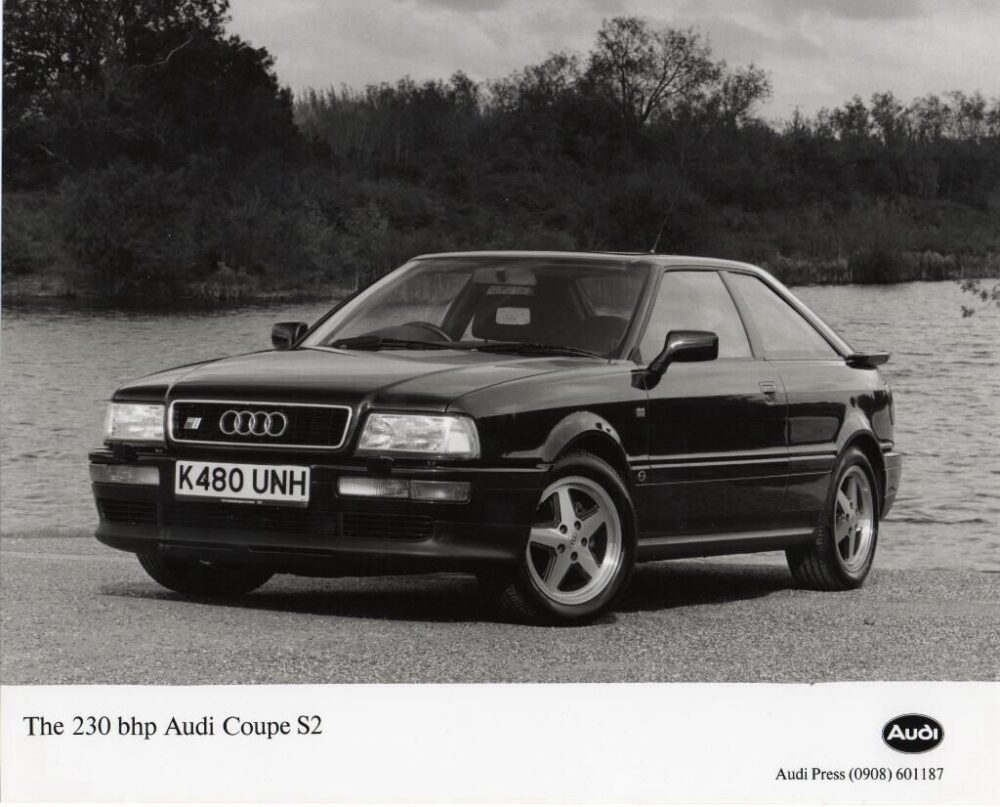
The S2 was originally a 2-door only, but in 1993 an estate version was introduced along with a limited-run 4-door saloon model.
Part of the allure performance cars is a combination of the aggressive look from the Quattro, coupled with the dignified lines of the 80. Although the S2 was successful for what it was, Quattro, GmbH. was already envisioning something much, much more savage. By 1993, Audi thoroughly developed the Quattro’s engine and could easily produce north of 300 horsepower without breaking a sweat. Not to mention the suspension and body development from Audi’s road racing. To truly solidify Audi as a maker of fast cars, they needed something with impact, without sacrificing the more sensible, premium heart of modern Audis. Thankfully, they’re a member of Volkswagen Auto Group. So a quick call to Porsche later, and Quattro, GmbH. gets to work.
Rennsport
When people think of high-performance, usually estate cars don’t come to mind. They’re typically seen as practical daily drivers. And if you got an Audi wagon, it was probably quite good in the snow as well. You can fit your luggage in the back and comfortably seat five (well, legally, anyway). Well, Audi’s joint-venture with Porsche gave them an idea. Audi was a maker of fine, premium, practical vehicles first and foremost. Sure, they had some savagely fast race cars, but you can’t just buy a ridiculously fast Audi from the factory in 1994… right? As it happened, Audi had an answer for that.
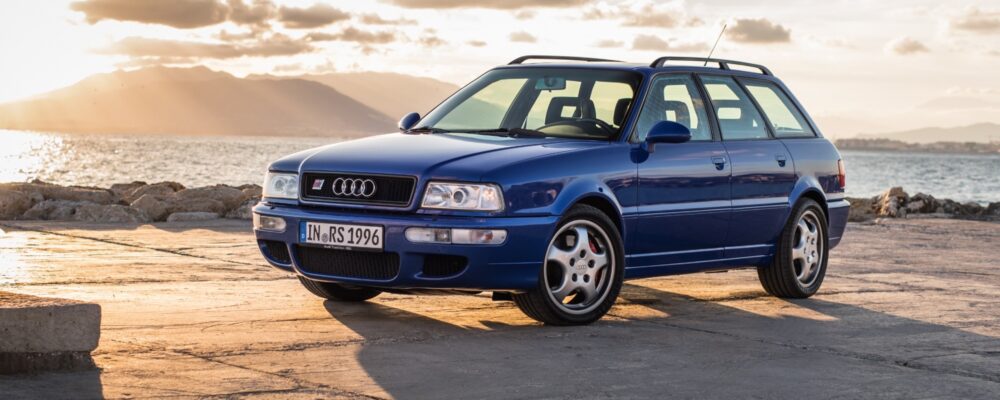
Porsche designed most of the running gear, including suspension and braking systems. A small giveaway (aside from the wheels) is the Porsche 964 wing mirrors.
This car, codenamed “P1” internally, came to be known as the RS 2 Avant. And wagon or not, it truly was something special. According to Porsche’s official figures, Audi only produced 2,891 examples between March 1994 – July 1995. But the RS 2’s impact continues making waves today. The 310+ horsepower engine has the second-highest specific power output of any Volkswagen-Group engine before or since, rocketing the car from 0-30mph in 1.5 seconds – faster than a McLaren F1. Even today, the figures embarrass modern sports cars, let alone cars of the period. It’ll get you to 60 in just 4.6 seconds, making it one of the fastest accelerating wagons ever. If Audi wanted to leave their mark on the performance car market, they could definitely do worse.
The RS 2’s Legacy
The impact of the RS 2 both internally and within the community cannot be understated. Suddenly, here was an affordable, practical luxury road car with the performance of a supercar. Very few luxury cars actively encourage you to learn proper countersteering techniques. But the RS 2 Avant was no ordinary car. Everything from the 17” Porsche alloy wheels to the aggressive wide-open front grille accentuated the car’s prowess without sacrificing its practicality as a driver’s car. At the end of the day, no matter how fast it was, it was still a quattro-equipped wagon. And thus, you could drive it to work, Sunday Mass, or the racetrack and the car’s perfectly at home. Thanks to its 4WD system, it easily exceeded the performance figures of the other luxury-brand offerings. But it was still a limited-edition car. And one hell of an act for Quattro, GmbH. to follow.
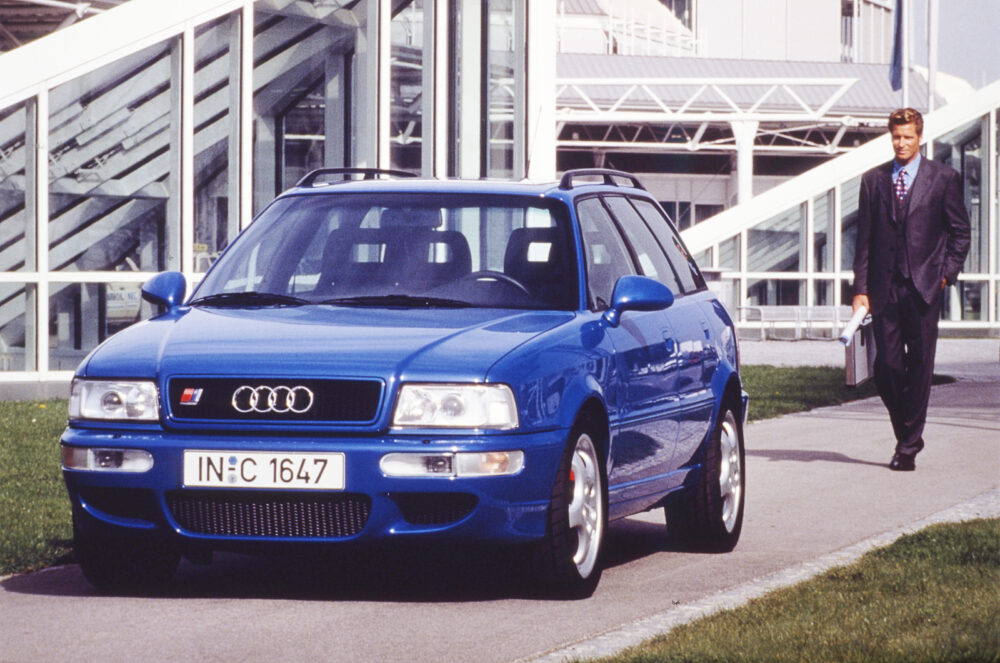
Audi touted the RS 2 as having Porsche-like handling so much that Porsche embossed their name into the “RS” badging.
The RS 2 itself was a lightning-in-a-bottle car, never again duplicated by Audi. But it also established Quattro, GmbH. as a competent maker of performance luxury cars, on par with M-Sport and AMG. Following the RS 2 Avant’s retirement, Audi committed to its S and RS-line, badging all future performance packages as such. A large number of Audi’s offerings featured at least one such package, a trend which continues today. In 2016, Audi renamed its performance division to Audi Sport. Today, Audi Sport produces 19 distinct S and RS-models based on various chassis designations. Some of the top-of-the-line models, such as the RS 6, are capable of speeds in excess of 190 mph. And, of course, they’ll do that without sacrificing any of the modern luxuries people come to expect of Audi products.
Additional images by Audi Newsroom and Wikimedia Commons
